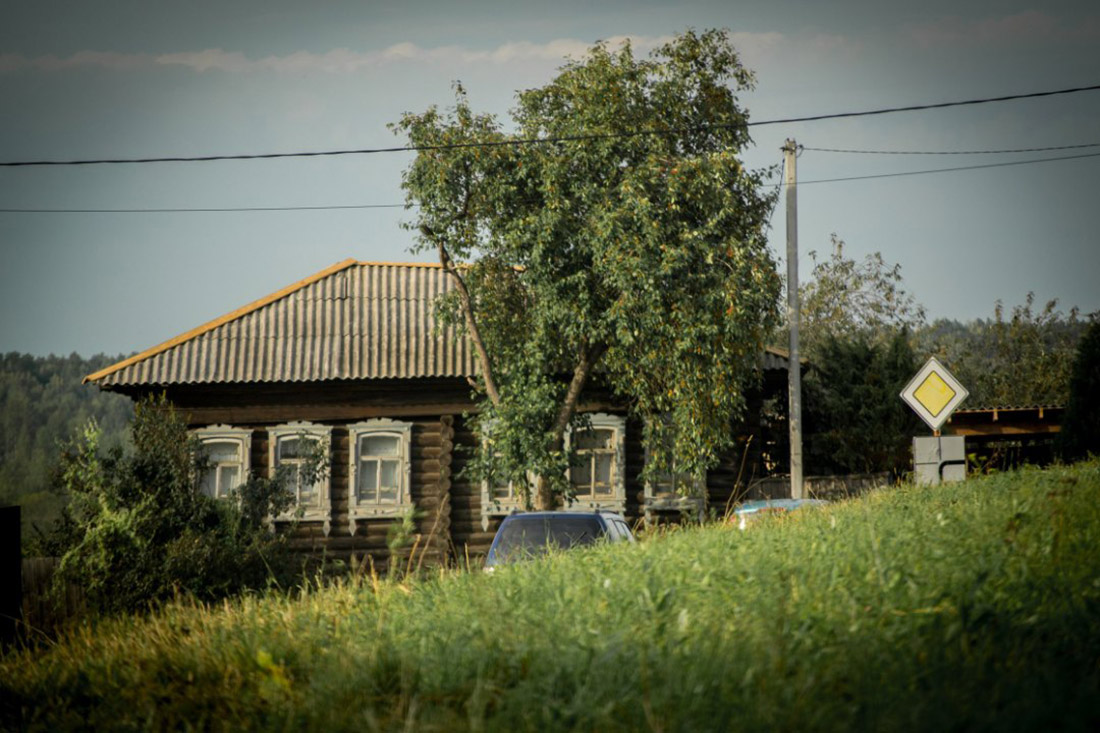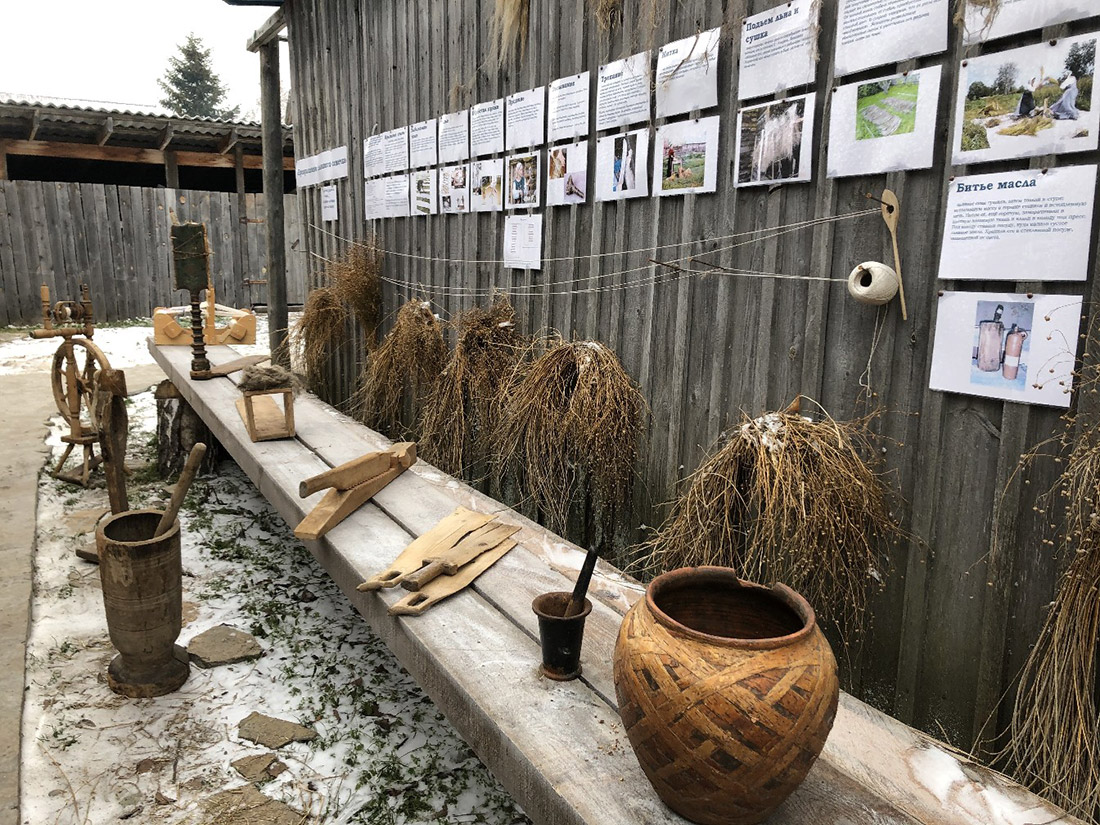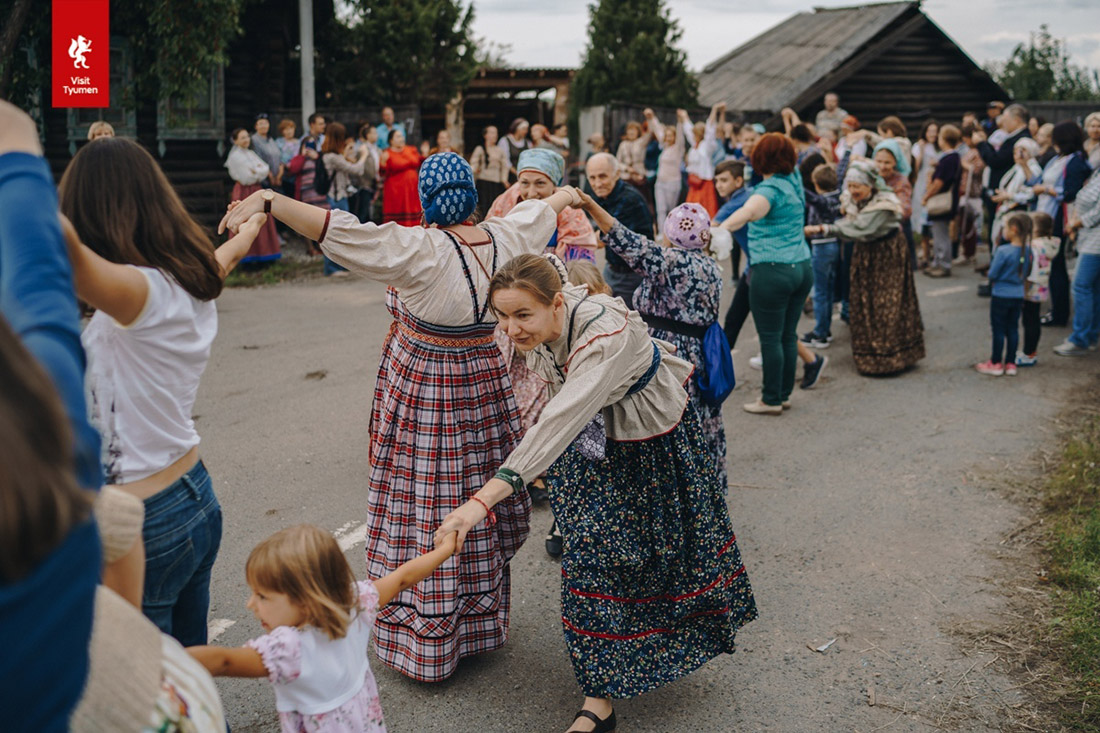The Peasant Life History Museum
Tyumen region
Contact information
Tyumen Region, Tyumen District, Nasekina Village, Tsentralnaya Ulitsa, Building 7
Tel.: +7 (912) 390-42-16
E-mail: museum72nasekina@mail.ru
Operating hours
Saturday and Sunday, 12:00 – 18:00
Tours start at 12:00 and 15:00
Ticket price
Custom tour + interactive tour (2 hours):
Adult – 500 rubles;
Reduced rate – 250 rubles.
Group and individual tours can be done any day by appointment.
An individual tour is carried out for any number of visitors by appointment, made no less than one day in advance of the tour. The individual tour price from Monday to Friday is 6,000 rubles.
A group tour is carried out for groups of 20 visitors by appointment, made no less than 2 days in advance of the tour. The group tour price is calculated under standard ticket price list.
Founder of the museum
Ivan Ivanovich Nesterov
Director of the museum
Inna Alexandrovna Nesterova
Founded
2019
The idea of creating the museum belongs to the famous geoscientist and corresponding member of the Russian Academy of Sciences, Ivan Ivanovich Nesterov, who comes from peasant family. The idea was picked up by a group of enthusiasts (craftsmen and teachers of folk crafts), and was implemented in August 2019.
The museum is housed in an old wooden five-wall house, in a picturesque location – one of the oldest villages along the Irbitsky road, the village of Nasekina, which is 30 kilometers from the city of Tyumen.
The first mention of this single-farm village was during the census in 1623: “In the Tyumen district there were the following villages of service people: by the Tura River up from the city – Vaska Lepeshka’s, Trenka Pelymsky’s, Mitka Golaya Shuba’s, and Oleshka Nasekin’s Mikhalka Nasekin’s”.
The museum complex includes a closed peasant courtyard consisting of a log house on the basement, a crib, a bathhouse, a barn, and a fence.
The exposition, located in two parts of the house, reflects the stages of development of the peasant economy, and gives an idea of the peasants’ lives during the 19th and 20th centuries.
The first block of the exposition is a hut with a large Russian stove and ascetic, traditional for the 19th century decorations: tables, homespun rugs, folk terry Tyumen carpet, benches, utensils, looms, spinning wheels, and tools. Guests will get acquainted with the life of a family living in subsistence farming. Traditional peasant crafts are presented, including the full cycle of linen processing and the development of hand weaving on its basis.
The first block of the exposition includes:
– Tools for the processing and spinning of linen and sheep’s wool;
– Walls for weaving linen, rugs, and carpets;
– Furniture and chests;
– Devices for washing and ironing;
– Kitchen utensils for cooking and baking bread, and a samovar on firewood.
The second block of the exposition is the living room-cabinet of the mid-20th century. The room is heated by a round Dutch stove, furnished with furniture, and decorated with textiles. It was a bright, happy time after the war, when the destroyed country recovered from losses as Industry began to produce consumer goods. This is the time of widespread enthusiasm and interior use of various types of embroidery, weaving, crocheting and knitting, and paintings. Tablecloths and handkerchiefs donated to the museum were carefully preserved. The exposition is mainly focused on decorative items collected and made by the founder of the museum himself, Ivan Ivanovich Nesterov. The exposition is supplemented by a mineralogical collection and a collection of handicrafts, which in different years were made by the landlord himself from natural materials.
The second block of the exposition includes:
– Various types of desktop and wall clocks;
– Gramophone, radio, and transistors;
– Typewriter, microscope, and measuring devices, which are personal belongings of the founder of the museum;
– Items of textile decorations of the room.
The interactive block includes:
In the interactive part of the tour, guests will feel like a skilled host and creator; you will:
– Take part in all flax processing cycles (depending on the season): sowing, pulling, threshing, spreading, myatka, beating, combing, spinning, and weaving;
– Get acquainted with the technology of wool preparation and weaving of the Tyumen carpet;
– Make a folk textile doll, which will become a wonderful memorable souvenir;
– Have fun in folk games.



